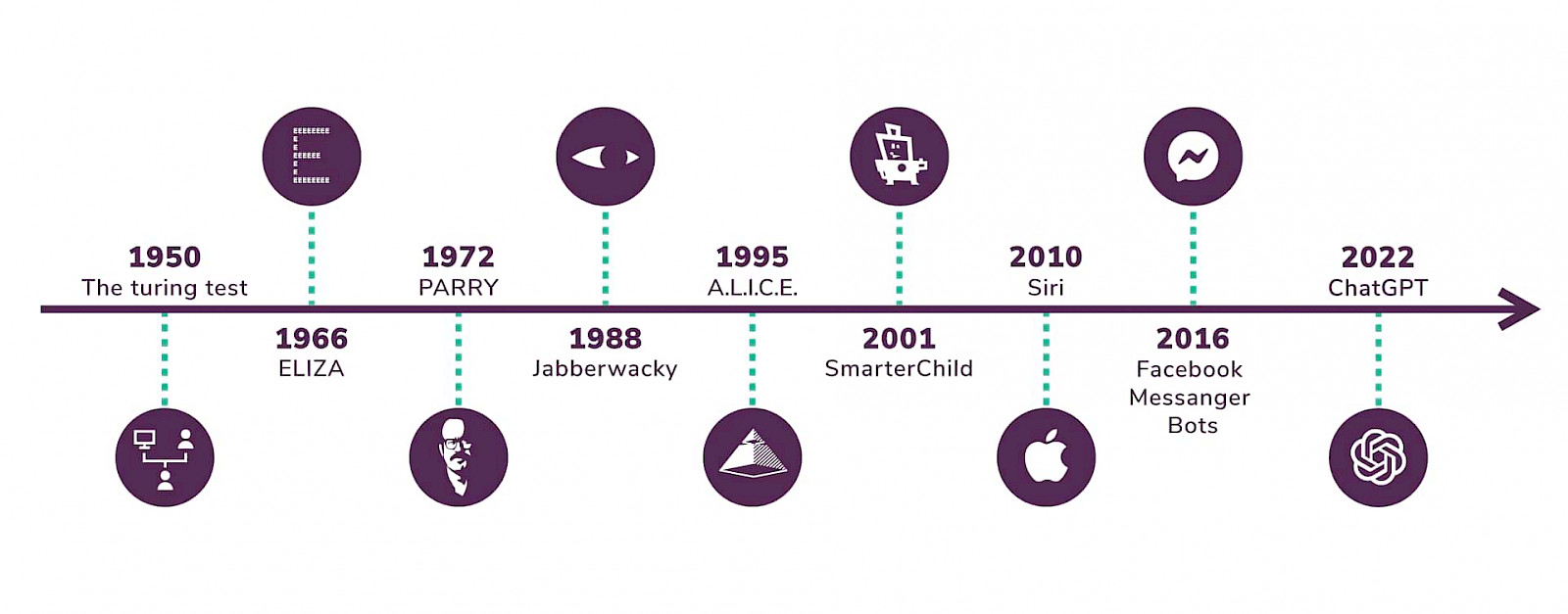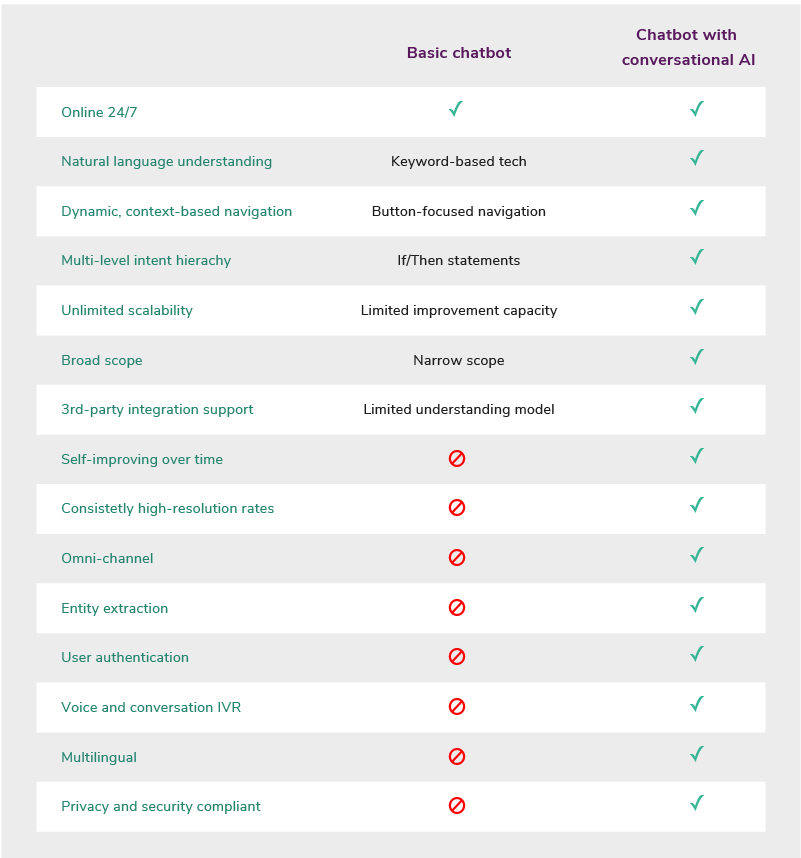In today’s fast-paced digital landscape, businesses are continuously exploring innovative ways to enhance customer engagement and streamline communication.
For us, one of the most transformative solutions is the adoption of a conversational AI chatbot, a sophisticated evolution of the traditional chatbot you certainly all know about.
These advanced AI-driven solutions are redefining customer service, sales interactions, and user experience, making it crucial to understand their capabilities compared to standard chatbots.
If you're a business owner looking to boost customer engagement, a developer fascinated by AI technology, or simply curious about the future of digital communication, this online guide will clarify the key differences between these two technologies.
Understanding chatbots
A chatbot is an automated messaging system designed to interact with users through text or voice interfaces. Initially developed to handle simple queries and routine tasks, chatbots have become indispensable in modern business operations, providing round-the-clock support, reducing operational costs, and enhancing customer satisfaction.
The history of chatbots dates back to the 1960s with ELIZA, an early program that mimicked conversation by matching user prompts to pre-scripted responses:

Over the decades, chatbots evolved from simple rule-based responders to more advanced, yet still limited, systems capable of handling predefined tasks.
Traditional chatbots were first introduced in customer service to handle frequently asked questions and assist users with website navigation. Industries like retail, banking, and telecom quickly adopted this technology to improve customer interactions, reduce wait times, and extend service availability beyond traditional business hours.
However, these chatbots operate with a predefined set of responses, making them effective for simple tasks but ineffective when dealing with complex queries or understanding nuanced user intent.
As customer expectations have grown, businesses have started shifting towards conversational AI chatbots to provide a more interactive and intelligent user experience.
Introducing conversational AI chatbots
Unlike traditional rule-based chatbots, conversational AI chatbots leverage Natural Language Understanding (NLU), Natural Language Processing (NLP), machine learning, and sentiment analysis to engage in human-like conversations.
These AI-driven chatbots can interpret context, manage nuanced interactions, and learn from past conversations to continuously improve their responses.
The primary difference between a chatbot and a conversational AI chatbot lies in the AI-powered bot’s ability to grasp context and adapt its responses dynamically. Instead of following a rigid, pre-defined script, conversational AI chatbots analyze customer input, predict intent, and provide responses tailored to the user’s specific needs:
The importance of NLU in conversational AI
o assist users effectively, a chatbot must first understand their intent. Machine learning helps achieve a basic level of comprehension, but true conversational AI chatbots go beyond that. By utilizing deep learning and natural language understanding (NLU), they transform customer experiences, ensuring that interactions are fluid and meaningful rather than frustrating or repetitive.
Learn how natural language understanding works (5 min read)
Applications of AI conversational chatbots
Across industries, businesses are leveraging AI conversational chatbots to automate interactions and improve efficiency.
Sectors such as financial services, insurance, telecom, and public sector have already integrated conversational AI chatbots into their customer engagement strategies to achieve several key benefits:
- Enhanced customer service efficiency: Conversational AI chatbots handle thousands of interactions simultaneously, reducing wait times and ensuring customers receive instant assistance 24/7.
- Cost reduction: Implementing conversational bots reduces the need for large customer support teams, cutting operational expenses while maintaining service quality.
- Scalability: AI-driven chatbots scale effortlessly to accommodate fluctuating demand, making them ideal for growing businesses or industries with seasonal spikes.
- Personalized customer experiences: By analyzing user data and past interactions, conversational AI chatbots offer tailored recommendations and responses, fostering customer satisfaction and loyalty.
- Lead generation & sales optimization: AI conversational chatbots engage with potential customers, qualify leads based on predefined criteria, and direct high-quality prospects to the sales team.
The results speak volumes about their efficacy and impact. Here are some results our customers use to achieve regularly:
- 51% less chat traffic to human support in 6 months
- 10 000+ daily customer interactions automated
- 7 in 8 customers think ai chatbots are fast and easy
- 608% increase in use - one year after launch
Here you can learn more about these results:
- Tryg uses conversational AI to improve customer experience and operational efficiency across three markets
- Telenor is enhancing customer experience with conversational AI
- DNB automated 20% of all customer service traffic with a 'chat-first' approach
These examples highlight the game-changing potential of conversational AI chatbots in modern business environments.
What solution should you choose?
Choosing between different conversational AI solutions depends on several factors, including the complexity of customer interactions, desired engagement level, budget, and technical expertise.
- Chatbots: Best for businesses seeking a cost-effective, straightforward way to automate simple interactions. They efficiently handle FAQs and structured responses but lack contextual understanding.
- AI chatbots: A scalable solution offering human-like interactions, personalization, and continuous learning. Ideal for businesses prioritizing innovation, deep customer engagement, and long-term relationship building.
- LLM agents: Leveraging large language models, these agents provide highly advanced responses, understand nuanced queries, and generate sophisticated conversational flows. Best suited for businesses looking for top-tier AI capabilities with deep contextual awareness.
- AI agents: Autonomous AI-driven assistants that integrate with multiple data sources and business tools to perform complex tasks beyond simple customer interactions. These agents are ideal for enterprises aiming to automate workflows, enhance productivity, and improve operational efficiency.
Ultimately, businesses must evaluate both immediate cost savings and long-term value. Investing in the right conversational AI solution ensures a dynamic, adaptive, and satisfying customer experience, keeping companies ahead in an increasingly AI-driven world.





